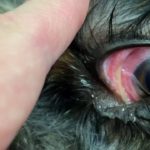
Grass seeds are prevalent in the environment and with animals playing in the fields, they are easily collected by hairy coats. As the animals continue to move around, the grass seeds frequently migrate to other parts of the body including under the skin, in between toes, under the eyelids, into the ear canal and more.
Animals regularly groom themselves but their skills are often no match for migrating grass seeds that have invaded further than the coat. The body sees them as foreign material and will work hard to remove it by natural means but sometimes they become trapped, leaving the animal sore and irritated.
Grass seeds which have travelled under the eyelid can potentially scratch the cornea causing further damage and ulceration. Others that have moved under the skin can cause abscesses and infection.
They can also move down the ear canal, can potentially rupture the ear drum and can be extremely painful.
- Grass seed- eye
- Grass seed- toes
- Grass seed – ear examination
Rather than attempting to remove them at home, veterinarians have the skills and proper equipment to remove them safely and comfortably.
In the case that an animal is too uncomfortable to have it removed, it is aided with local anaesthetic, sedation or general anaesthetic for the comfort and welfare of the patient. With the animal lying still, it can prevent further damage to the eye if the grass seed is stuck under the eyelid, or prevent rupturing the ear drum if the grass seed has come close to the membrane.
Abscessed wounds and ruptured ear drums may require medications or pain relief while they heal. It is important to only medicate your pet under the advice of your veterinarian as an animal will metabolise medications a little differently to people and some medications can have toxic effects on particular species. Always speak to your vet before administering any medications. Never put anything down the ear unless it has been discussed and advised by your vet.
To help recognize if your pet has a grass seed, check them daily for any abnormal lumps that have appeared. Examine the eyes for swelling, redness or inflammation. Shaking of the head or constant scratching at the ears can be symptoms of a grass seed in the ear canal. Even if you can’t see it, grass seeds can hide further down. Horses will often get them embedded in the gums or eyes. Do not attempt to remove any foreign material from the eyes as this can cause painful damage to the cornea.
If you are concerned that your pet may have a grass seed trapped that requires attention, contact the Gisborne Veterinary Clinic on (03) 54282805 to schedule an appointment.





